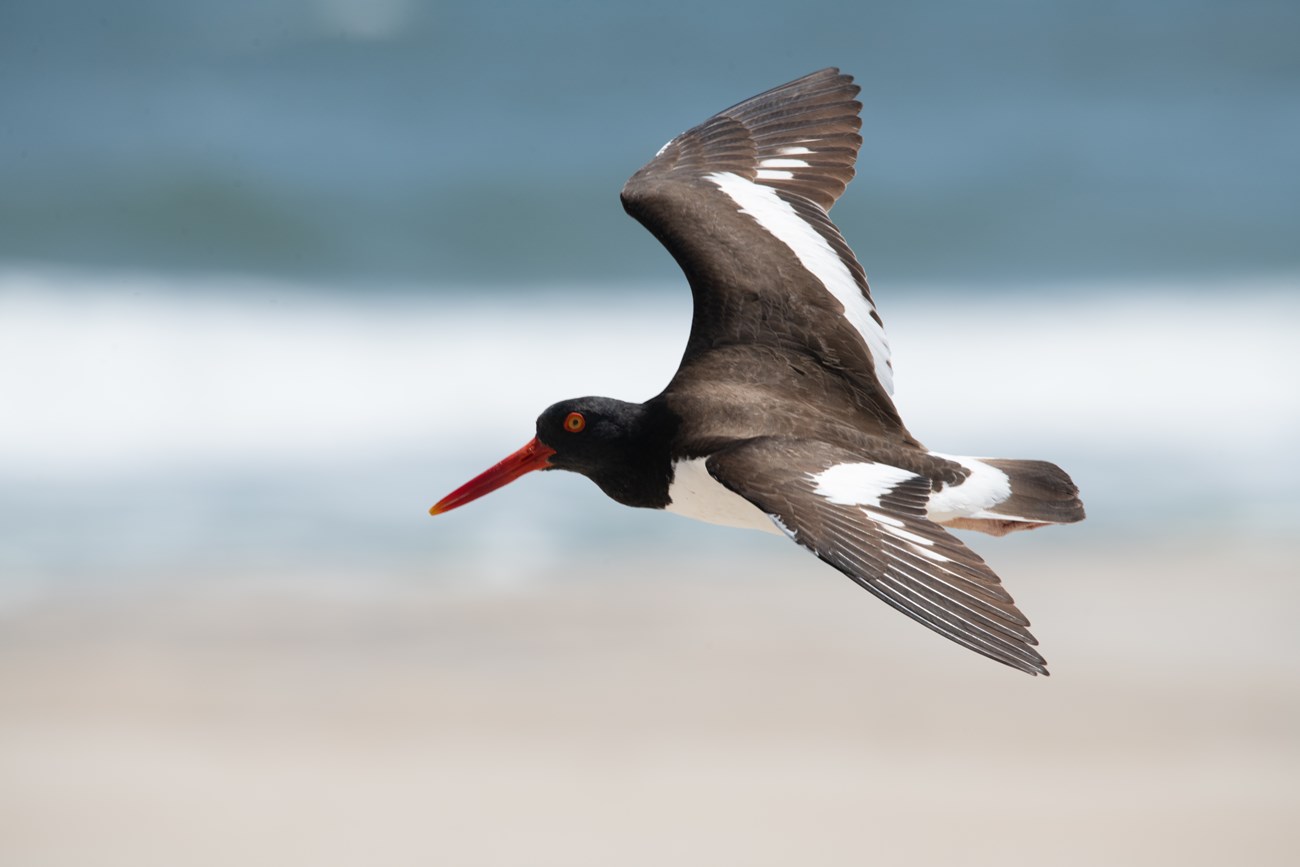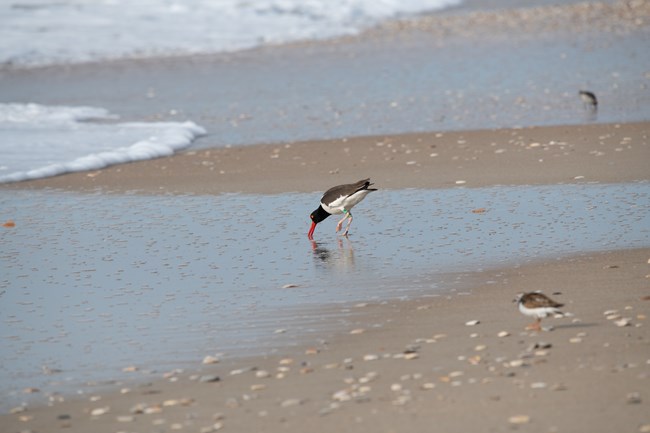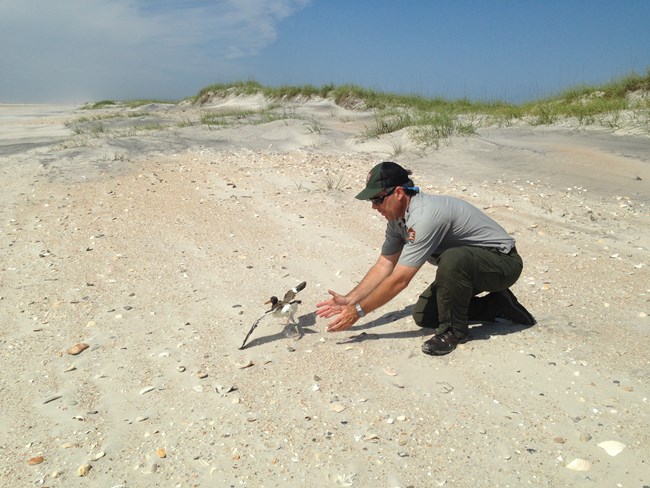
NPS/Morgan Barnes 
NPS/Morgan Barnes Eating Habits
Migration Patterns Throughout the Atlantic Coast, American oystercatchers have been known to nest from Boston, Massachusetts down to Gulf Coast of Mexico. The nonbreeding birds can sometimes be found in Central America, and off the coast of Argentina and Chile. During the wintering, some birds stay in Long Island, down to the coasts of Mexico. The largest populations of wintering American oystercatchers can be found in Virginia, North Carolina, and South Carolina. American oystercatchers can be non-migratory, meaning they stay in the same area where they are nesting. Many details about the American oystercatcher’s migration pattern remains a mystery to researchers. To learn more about their habits, many researchers band the birds, including Cape Lookout National Seashore, to track their migration patterns, and to see which birds stay in their nesting areas. Resource Management In 2008, the North Carolina Wildlife Resource Commission named the American oystercatcher as a North Carolina Special concern species, in part due to its choice of beach nesting habitat that makes them vulnerable to disturbance. Resource Management started monitoring nesting in 1995. To protect American oystercatcher eggs, Resource Management will create nesting closures at nests that are in danger of being run over on the driving routes. Areas of the beach will be closed to stopping, parking, and camping at active nests. Through research, it was discovered that a percentage of chick mortality was caused by offroad vehicles. Now, when nests are expected to hatch, beach traffic is halted and when possible redirected. This allows the chicks to hatch and use vehicle-free habitat until they can fly. In 2021, Cape Lookout had 52% hatch success rate for South Core Banks, and 52% for North Core Banks. American oystercatchers did not breed on Shackleford Banks. The overall fledge rate was 1.17, with forty nests hatching and 63 fledged chicks on Cape Lookout. To read more about the American oystercatcher nesting success at Cape Lookout National Seashore, annual reports are posted on the publications page. 
NPS Photo Throughout the breeding season, Resource Management will record band re-sights of individual and nesting pairs of American oystercatchers. Under the North Carolina State University’s band permit, trained biologists and technicians will capture and band American oystercatcher adults and chicks. Banding allows researchers to track population demographics, breeding patterns, habitat requirements, and survival. Cape Lookout’s staff can track individual nesting patterns and movement of birds throughout the park. Of the banded American oystercatchers at Cape Lookout, one has grabbed Resource Management’s attention. Commonly known as “AL” because of the distinct A L band on her legs, Al has raised over 10 broods of chicks successfully between 2007 and 2021. In 2022, she had her first nest in May, and a second nest in June. By using a band, Resource Management can track “AL”’s nesting patterns and learn more about American oystercatchers. |
Last updated: September 24, 2025
